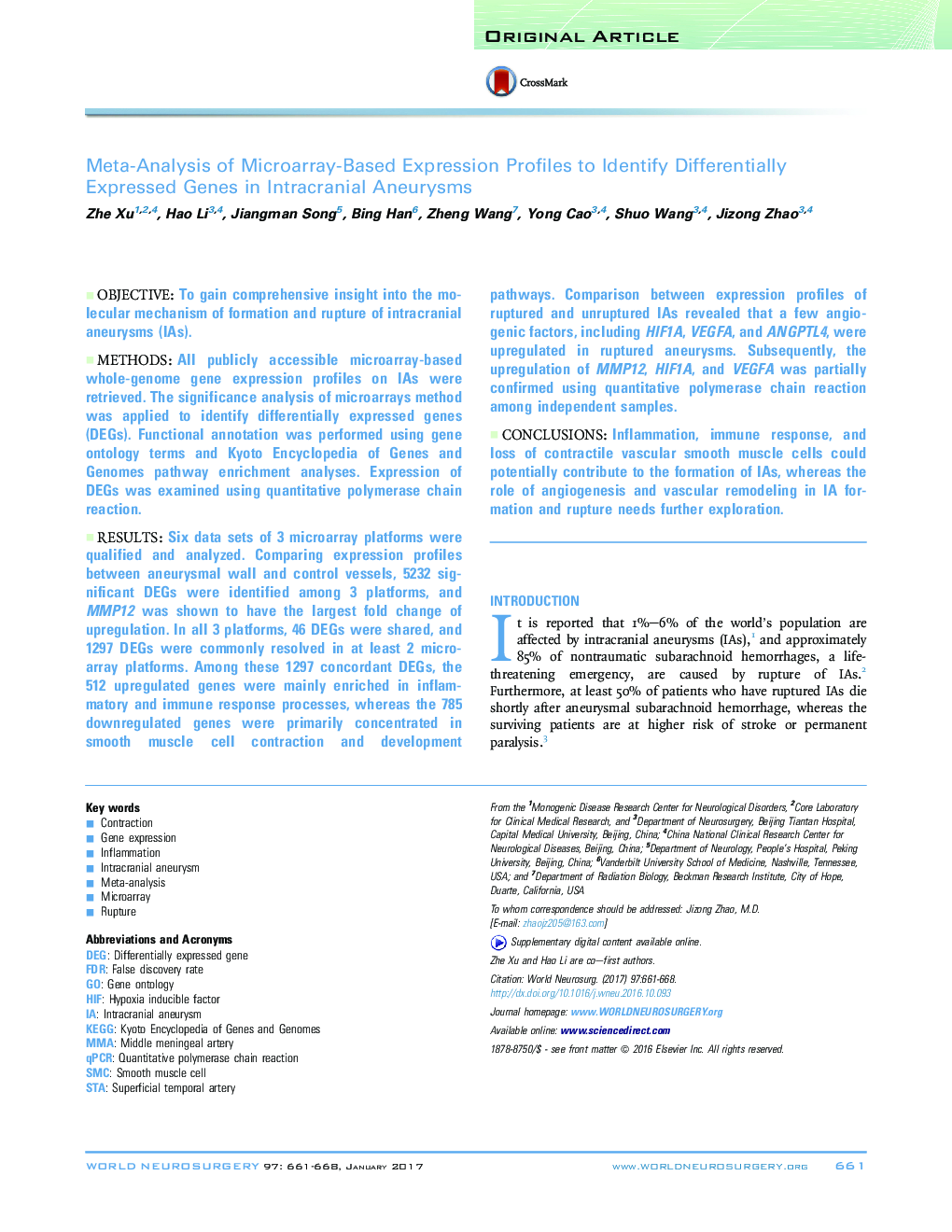| Article ID | Journal | Published Year | Pages | File Type |
|---|---|---|---|---|
| 5634759 | World Neurosurgery | 2017 | 15 Pages |
ObjectiveTo gain comprehensive insight into the molecular mechanism of formation and rupture of intracranial aneurysms (IAs).MethodsAll publicly accessible microarray-based whole-genome gene expression profiles on IAs were retrieved. The significance analysis of microarrays method was applied to identify differentially expressed genes (DEGs). Functional annotation was performed using gene ontology terms and Kyoto Encyclopedia of Genes and Genomes pathway enrichment analyses. Expression of DEGs was examined using quantitative polymerase chain reaction.ResultsSix data sets of 3 microarray platforms were qualified and analyzed. Comparing expression profiles between aneurysmal wall and control vessels, 5232 significant DEGs were identified among 3 platforms, and MMP12 was shown to have the largest fold change of upregulation. In all 3 platforms, 46 DEGs were shared, and 1297 DEGs were commonly resolved in at least 2 microarray platforms. Among these 1297 concordant DEGs, the 512 upregulated genes were mainly enriched in inflammatory and immune response processes, whereas the 785 downregulated genes were primarily concentrated in smooth muscle cell contraction and development pathways. Comparison between expression profiles of ruptured and unruptured IAs revealed that a few angiogenic factors, including HIF1A, VEGFA, and ANGPTL4, were upregulated in ruptured aneurysms. Subsequently, the upregulation of MMP12, HIF1A, and VEGFA was partially confirmed using quantitative polymerase chain reaction among independent samples.ConclusionsInflammation, immune response, and loss of contractile vascular smooth muscle cells could potentially contribute to the formation of IAs, whereas the role of angiogenesis and vascular remodeling in IA formation and rupture needs further exploration.
